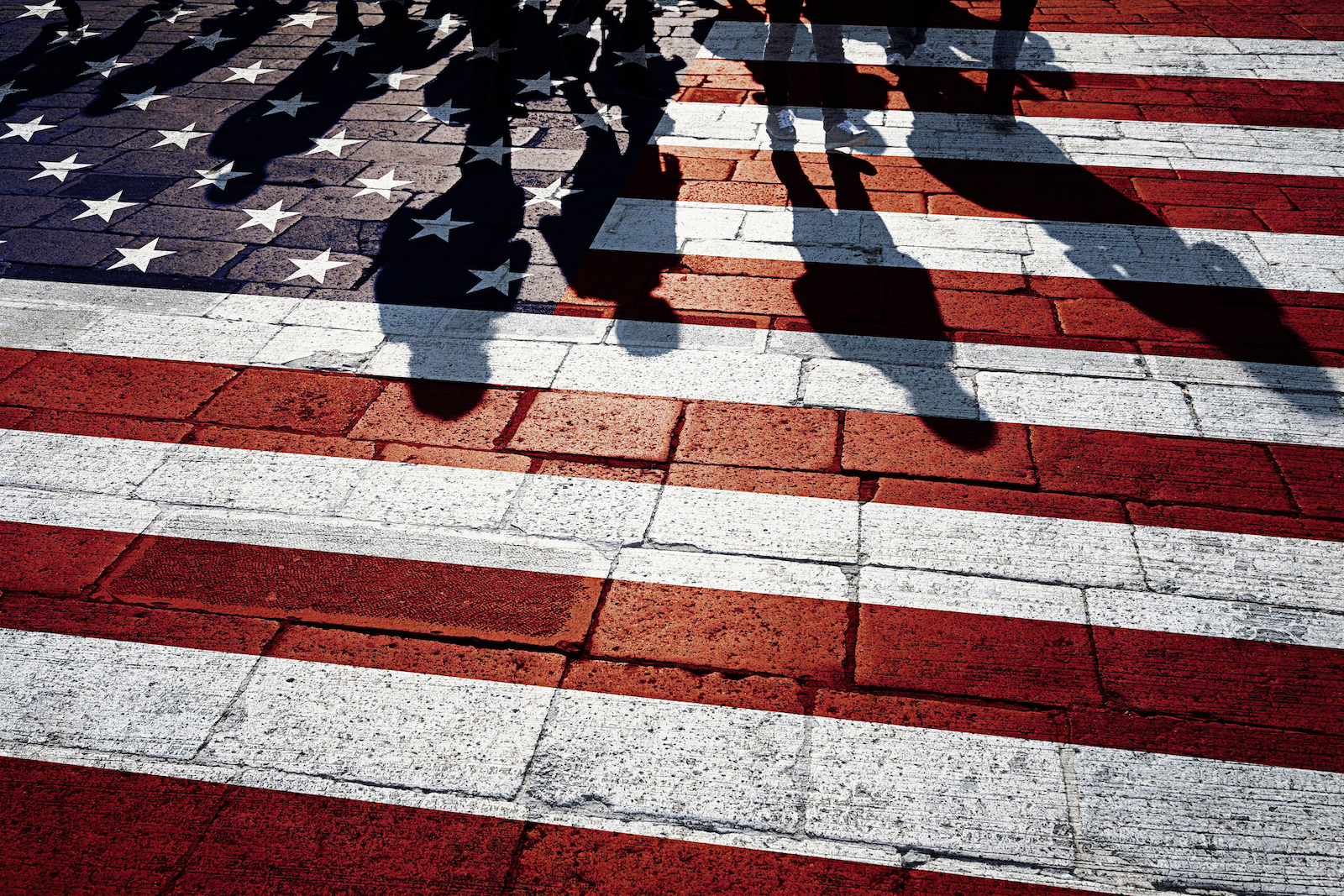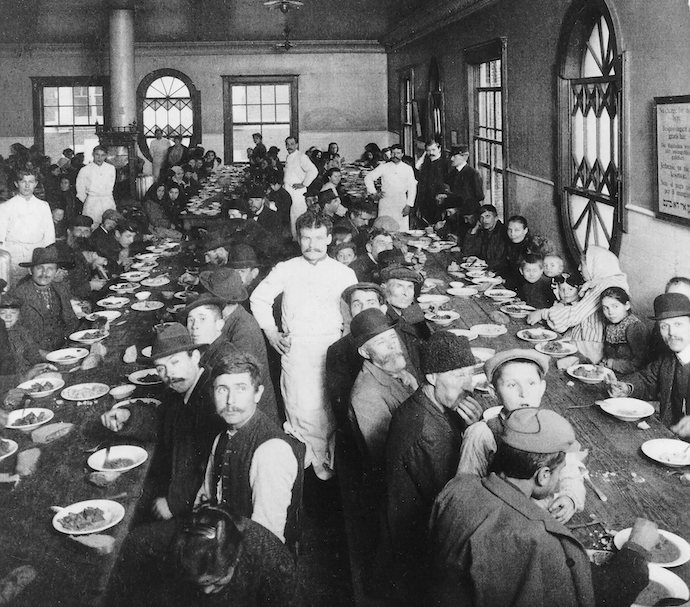
Culture
Reimagining American Identity in an Era of Multiculturalism
In the heart of New York Harbor, she stands tall — a resplendent guardian of freedom. The Statue of Liberty, with her torch held high and gaze bearing witness to the ebb and flow of history, beckons countless souls across the seas, whispering promises of hope in their weary ears. Her copper visage once shone under light, serving as a radiant beacon of life, liberty, and the pursuit of happiness.
But as time etched its mark on her, rust began to creep, uninvited, along the edges of her frame. Her once vibrant copper complexion tints her now in a muted green, yielding to the ravages of time and nature. What was once a shiny copper is now enshrined in the nation’s collective memory; no one quite recalls the lustrous gleam it possessed. It is all at once captivating and evocative; a graceful metamorphosis of an enduring national symbol.
Within the story of Lady Liberty, America finds itself gazing into a mirror.
Like the towering statue, its founders believed the nation to have risen above the rest of the Western world, its surface gleaming with promise. In the same way that Descartes’ words, “I think, therefore I am,” signaled a paradigm shift to rationality in the West, the words following “We the People” forever cemented America as a revolutionary, unique force in the world, appealing to the religiously persecuted and individuals in search of socioeconomic mobility. But the memory of that united America — one where all citizens stood as one — has slowly faded into the recesses of history, much like the once-shiny copper coating of the statue.
And as waves of immigrants crashed onto America’s shore throughout the 19th century and embraced the promise of America, the complexion of its identity changed, mirroring the changing hues of the statue itself. This transformation was not solely shaped by diversity, but also marred by adversity in the forms of the Chinese Exclusion Acts and the Know-Nothing Party, to name a few, inflicting corrosive wounds that would change the color of American identity forever.

Today, in an era defined by unprecedented levels of multiculturalism and diversity, persistent, conservative notions of identity continue to shape the American experience. To them, America, much like the iconic Statue of Liberty, has come to represent more than just grandeur and prosperity, but a deeply founded value — in life, liberty, and in democracy. But to others, America symbolizes nothing more than economic opportunity and investment; a polity that worships at the altar of money. Ultimately, the shifting values and identities embraced by new waves of immigrants in America, coupled with the evolving demographic landscape, indicate an ongoing identity crisis in 21st-century America.
In a nation born of immigrants, the shifting values and identities embraced by each successive generation reflect the ever-evolving landscape of America. For one, the earliest waves of colonial settlers in the 17th century were often motivated by social and religious influences, with groups such as the Puritans seeking refuge from religious persecution in England. Thousands of English, Dutch, and Scottish political and religious nonconformists sailed across the Atlantic in search of a land where they could freely practice their beliefs and forge new lives, driven by visions such as John Winthrop’s utopian “city upon a hill.” Social factors such as the pursuit of land ownership, escape from overcrowded cities, and the promise of better living conditions were also influential in driving transatlantic migration.
To these early settlers, America resonated like a clarion call to forge their individual destinies in a land brimming with opportunity and freedom — to which they responded enthusiastically.
Since then, the narrative of America has been firmly rooted in values of life, liberty, and freedom — values that became emblematic of the nation, radiating to the rest of the world. Consequently, immigrants continued to flock to America in numbers higher than ever throughout the industrialization era, drawn by the promise of economic opportunity and religious liberty. From those compelled to escape anti-Semitic persecution in the Russian Empire to families ravaged by famine in Ireland, and individuals in pursuit of employment opportunities in factories and mines, America appeared to offer solace and opportunity. James Madison’s words that “a spirit of liberty and patriotism animates all degrees and denominations of men” seems to perfectly capture the spirit that brought these immigrants to America, as they sought to embrace the freedoms and opportunities it offered.
However, the narrative of American immigration has undergone a significant transformation in the past 50 years; never before in its 250-year history of independence has the nation witnessed such a rapid increase in its foreign-born population. Immigrants currently make up 13.7% of the populace — levels that have only been matched in 1880 and 1920.
Alongside shifting demographics, immigrant values have evolved dramatically. In fact, a Cato Institute survey of over 2,600 U.S. immigrants found that nearly 72% of immigrants came to America for purely economic reasons, namely, to “find jobs and improve their lives.” Those fleeing political and religious persecution made up 20% and 12%, respectively. Naturalization rates, alongside applications for citizenships, have been on a downward trend for the last three decades, even though the immigrant share of the U.S. population has reached a historic high. Disinterest and language barriers emerge as primary reasons cited by immigrants for their decision to forgo pursuing citizenship.
This is not normal. A far call from the religious freedom and liberty that Puritans sought in moving to America, immigration has shifted into an economic proposition. Values that were so deeply enshrined in the American ethos appear to have been cast aside, as this new wave of immigrants demonstrates less willingness to assimilate into American culture and embrace its core principles.

In contrast, there is a concerning lack of receptiveness among citizens to embrace the rich diversity of cultures that immigrants bring and cling to. In fact, 54% of citizens want immigrants to “adopt the customs and ways of life” of America, reflecting a desire for assimilation. Moreover, incidents of race-based violence and discrimination have witnessed an alarming surge across the nation alongside growing levels of political polarization.
James Madison’s proclamation that “a spirit of liberty and patriotism animates all degrees and denominations of men” now feels strikingly distant from the current spirit of America. The erosion of unity and shared values raises pressing questions about the evolving fabric of American society and its ability to nurture a genuine sense of liberty and patriotism — both to its immigrants and among its own citizens.
Put simply, 21st-century America faces an identity crisis. The traditional narrative of America as a melting pot — a harmonious amalgamation of diverse cultures and backgrounds — is being tested amidst a backdrop of demographic transformation, cultural change, and the relentless pace of globalization.
This shift in identity where individuals hold different notions of America, has inadvertently resulted in an erosion of common values. The once-unifying ideals of liberty and freedom, which once defined the nation, now face challenges as divergent perspectives vie for prominence; a cohesive understanding of national identity becomes elusive. What remains is a complex tapestry of conflicting interpretations, where divergent visions of history, culture, and identity shape the collective consciousness of the nation.
But what is a nation, if not, a body of people united by common history, culture, and identity? It is a question that — even after nearly 250 years — continues to elude America without a definitive answer.
In light of the nation’s search for a cohesive national identity, our current political climate holds particular importance. We have reached a critical juncture where the old notions of identity are being challenged and a new one is being forged. Traditional power structures have started to become dismantled; in fact, by 2045, the U.S. is predicted to be minority white. More people of color have occupied political seats than ever before, with nearly a quarter of members of Congress identifying as something other than non-Hispanic White. A majority of Americans — 57% — believe that racial and ethnic diversity is highly beneficial for the country. Multiculturalism, albeit slowly, is becoming a stronghold of the American psyche.
And at the heart of this transformation lies Generation Z — the fastest-growing, diverse, and racially-friendly generation in the history of the nation. It is this generation who are leading the fight to upend traditional power structures, whether that be through the Black Lives Matter movement or the LGBTQ+ rights movement. In interrogating and redefining Americanism in light of evolving societal values and aspirations, Generation Z has started casting a shadow over the mythologized, restrictive notion of what American identity is, whether that be branded with the label of manifest destiny or Trumpism.
In doing so, we stand at the precipice of shaping a new national identity — one that reflects the aspirations of an increasingly diverse and progressive society, rather than merely losing or abandoning the old.
As the sun sets behind the New York skyline, casting its warm hues upon Lady Liberty, she continues to stand proud amidst the tumultuous winds of change, continuing to beckon people from across the globe. Just as the statue’s enduring green patina stands as a testament to the passage of time and the resilience of its construction, so too does it symbolize the need to embrace change and diversity. No matter how much some may yearn to restore the statue’s original copper color, it remains forever transformed — its gradually oxidizing surface a reflection of the nation’s complex, ever-evolving identity.
